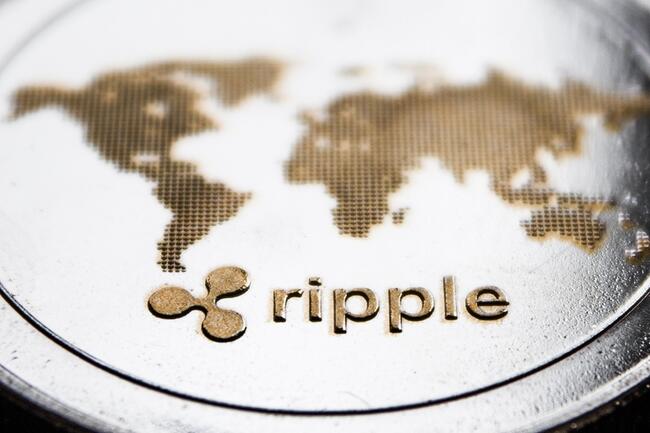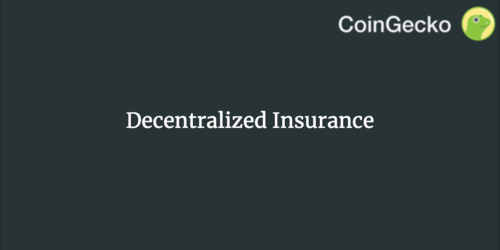

ARMOR
ARMOR Price
How is the price of ARMOR (ARMOR) calculated?
The price of ARMOR (ARMOR) is calculated in real-time by aggregating the latest data across 2 exchanges and 3 markets, using a global volume-weighted average formula. Learn more about how crypto prices are calculated on CoinGecko.
ARMOR Price Chart (ARMOR)
| 1h | 24h | 7d | 14d | 30d | 1y |
|---|---|---|---|---|---|
| - | - | - | - | - | - |
ARMOR Converter
|
Market Cap
Market Cap = Current Price x Circulating Supply
Refers to the total market value of a cryptocurrency’s circulating supply. It is similar to the stock market’s measurement of multiplying price per share by shares readily available in the market (not held & locked by insiders, governments) Read More |
$61,979.22 |
|---|---|
|
Market Cap / FDV
The proportion of current market capitalization compares to market capitalization when meeting max supply.
The closer the Mkt Cap/FDV to 1, the closer the current market capitalization to its fully diluted valuation and vice versa. Learn more about Mkt Cap/FDV here. |
0.32 |
|
Market Cap / TVL Ratio
Ratio of market capitalization over total value locked of this asset. A ratio of more than 1.0 refers to its market cap being greater than its total value locked.
MC/TVL is used to approximate a protocol’s market value vs. the amount in assets it has staked/locked. |
0.0 |
|
Fully Diluted Valuation
Fully Diluted Valuation (FDV) = Current Price x Total Supply
Fully Diluted Valuation (FDV) is the theoretical market capitalization of a coin if the entirety of its supply is in circulation, based on its current market price. The FDV value is theoretical as increasing the circulating supply of a coin may impact its market price. Also depending on the tokenomics, emission schedule or lock-up period of a coin's supply, it may take a significant time before its entire supply is released into circulation. Learn more about FDV here. |
$195,813 |
|
Fully Diluted Valuation / TVL Ratio
Ratio of fully diluted valuation (FDV) over total value locked (TVL) of this asset. A ratio of more than 1.0 means that the FDV is greater than its TVL.
FDV/TVL is used to approximate a protocol’s fully diluted market value vs. the amount in assets it has staked/locked. |
0.0 |
|
24 Hour Trading Vol
A measure of a cryptocurrency trading volume across all tracked platforms in the last 24 hours. This is tracked on a rolling 24-hour basis with no open/closing times.
Read More |
$21.48 |
|
Total Value Locked (TVL)
Capital deposited into the platform in the form of loan collateral or liquidity trading pool.
Data provided by Defi Llama |
$228,779,250 |
|
Circulating Supply
The amount of coins that are circulating in the market and are tradeable by the public. It is comparable to looking at shares readily available in the market (not held & locked by insiders, governments).
Read More |
237,391,731
|
|
Total Supply
The amount of coins that have already been created, minus any coins that have been burned (removed from circulation). It is comparable to outstanding shares in the stock market.
Total Supply = Onchain supply - burned tokens |
750,000,000 |
|
Max Supply
The maximum number of coins coded to exist in the lifetime of the cryptocurrency. It is comparable to the maximum number of issuable shares in the stock market.
Max Supply = Theoretical maximum as coded |
1,000,000,000 |
ARMOR Historical Price
| 24h Range | $0.0002518 – $0.0002611 |
|---|---|
| 7d Range | $0.0002518 – $0.0002718 |
| All-Time High |
$1.95
Feb 04, 2021 (about 4 years)
|
| All-Time Low |
$0.0002354
Nov 03, 2024 (5 months)
|
How do you feel about ARMOR today?
What is ARMOR?
ARMOR is the governance token for Armor protocol.
How to obtain ARMOR?
ARMOR can be purchased from exchanges such as Uniswap or Sushiswap. You can find ARMOR trading on various centralized and decentralized cryptocurrency exchanges.
What is Armor?

Armor is the first insurance aggregator for DeFi. Leveraging the underwriting capability of Nexus Mutual, it offers pay-as-you-go insurance products and the ability to buy insurance covers without KYC.
It is the second iteration of the yInsure product from Yearn Finance. The first iteration of yInsure failed after the yInsure’s founders had a fallout. Yearn Finance chose to partner with COVER instead after the event and leave the yInsure product to Armor.
During launch, there are four main products, arNXM, arNFT, arCORE and arSHIELD.
What is arNXM?
Wrapped NXM (wNXM) was created to allow investors to have exposure to NXM without having to do KYC. However, as more wNXM were created, less NXM became available for internal functions of the mutual such as staking, claim assessment, and governance voting.
arNXM was created by Armor to solve this issue while still allowing investors to participate in Nexus Mutual’s operations without having to do KYC.
To get arNXM, users can stake wNXM in Armor. The wNXM is unwrapped by Armor and the NXM token is then subsequently staked on smart contracts on Nexus Mutual. By staking on Nexus Mutual, stakers signal that the smart contracts are safe and are thus paid a premium and this opens up more insurance covers for sale.
To ensure there is sufficient liquidity to exchange between arNXM and wNXM, 10% of the wNXM are not unwrapped. This 10% liquidity will only be refilled every 3 days.
arNXM can be referred to as a wNXM vault, where users deposit wNXM into the vault and can expect to receive a higher amount of wNXM in the future.
What is arNFT?
arNFT is the tokenized form of insurance cover purchased on Nexus Mutual. arNFTs allow users to buy insurance cover without having to do KYC. Since these insurance covers are tokenized as non-fungible tokens, users are now able to transfer them to other users or sell them on the secondary market. These tokenized covers also allow for further DeFi composability.
arNFTs can be minted for all protocols for which Nexus Mutual coverage is available.
What is arCORE?
arCORE is a pay-as-you-go insurance product, where Armor tracks the exact amount of user funds as they dynamically move across various protocols, and bills by the second using a streamed payment system. Underlying arCORE are pooled arNFTs that are broken down and sold at a premium. This allows for much more innovative product design and showcases the great composability of the DeFi ecosystem.
To compensate arNFT stakers for taking the risk of not fully selling out the cover, arCORE’s products are charged at a higher premium. Currently the multiplier is 161.8%, meaning the price would be 61.8% higher instead of purchasing directly from Nexus Mutual.
For the additional premium, 95% is given back to arNFT stakers, 2.5% is charged by Armor as an admin fee, and 2.5% is reserved for referral fee. At a 1.618 premium multiplier and 95% share of revenue, utilization would have to be greater than 65% for this to be profitable for arNFT stakers. This means that if the covers sold are less than 65% of those staked in the pool, then the stakers will have to foot the costs themselves.
What is arSHIELD?
arSHIELD is an insured storage vault for Liquidity Providers (LP) tokens where insurance premiums are automatically deducted from the LP fees earned. This essentially creates insured LP tokens where no upfront payments are required from the user.
arSHIELD only covers the protocol risk of the liquidity pools. For example, insured Uniswap LP tokens only cover the risk of Uniswap’s smart contract getting compromised, but not the risks of the underlying assets (e.g. hack of underlying asset protocol).
As such, arSHIELD is just a repackaged version of arCore. arSHIELD is offered in two versions with differing risk levels, similar to how fixed interest rate products are designed in tranches.
-
Shield+ Vaults
Shield+ Vaults are the safest risk tranche, where claim payouts are guaranteed as it is fully collateralized but cover capacity is limited. It has a higher premium multiplier of 200%, making it two times more expensive than Shield Vault.
-
Shield Vaults
Shield Vaults are the higher risk tranche, where claim payouts may not be fully reimbursed, as it depends on the available capital in the pool during the time of hack. To compensate for the extra risks, it only has a premium multiplier of 100%, meaning it is the same price as directly buying from the Nexus Mutual itself. Cover capacity is designed to be unlimited so users will have to be comfortable with the collateralization ratio as it might not be fully collateralized.
How to claim from Armor?
After a user files a claim, a review process will be triggered and submitted to Nexus Mutual for consideration. Armor token holders will also be able to participate in Nexus Mutual’s process for claim approvals and payouts using arNXM. If a payout is confirmed, the amount will be sent to Armor’s payout treasury before being distributed to the affected users.
What are the fees to use Armor?
Below is the profit sharing fees table updated as at January 2021.

One thing to note is that for every cover bought from Nexus Mutual, 10% of the premium is reserved for claim purposes, where the claim fees is 5% of the premium. This means that every user can claim twice with the same policy. If there are no claims at the end of the policy period, the 10% premium will be refunded. This is where the arNFT’s profit comes from.
Where can you buy ARMOR?
ARMOR tokens can be traded on decentralized exchanges. The most popular exchange to buy and trade ARMOR is Uniswap V2 (Ethereum), where the most active trading pair ARMOR/WETH has a trading volume of $20.78 in the last 24 hours.
What is the daily trading volume of ARMOR (ARMOR)?
The trading volume of ARMOR (ARMOR) is $21.48 in the last 24 hours, representing a 3.70% increase from one day ago and signalling a recent rise in market activity. Check out CoinGecko’s list of highest volume cryptocurrencies.
What is the highest and lowest price for ARMOR (ARMOR)?
ARMOR (ARMOR) reached an all-time high of BTC0.00005121 and an all-time low of BTC0.082870. It’s now trading -100.00% below that peak and 10.90% above its lowest price.
What is the market cap of ARMOR (ARMOR)?
Market capitalization of ARMOR (ARMOR) is BTC0.7455 and is ranked #6625 on CoinGecko today. Market cap is measured by multiplying token price with the circulating supply of ARMOR tokens (240 Million tokens are tradable on the market today).
What is the fully diluted valuation of ARMOR (ARMOR)?
The fully diluted valuation (FDV) of ARMOR (ARMOR) is BTC2.3553. This is a statistical representation of the maximum market cap, assuming the maximum number of 1 Billion ARMOR tokens are in circulation today. Depending on how the emission schedule of ARMOR tokens are designed, it might take multiple years before FDV is realized.
How does the price performance of ARMOR compare against its peers?
With a price increase of 0.00% in the last 7 days, ARMOR (ARMOR) is outperforming the global cryptocurrency market which is down -7.90%, while underperforming when compared to similar Alameda Research Portfolio cryptocurrencies which are up 7.90%.
How to add ARMOR (ARMOR) to MetaMask?
Adding ARMOR (ARMOR) to MetaMask allows you to view your token holdings, trade on decentralized exchanges, and more. To add them, you’ll need to import ARMOR as a token. You can copy ARMOR’s contract address (0x1337def16f9b486faed0293eb623dc8395dfe46a) and import it manually, or if you've installed MetaMask's chrome extension, add ARMOR to MetaMask with one click on CoinGecko.
Add ARMOR to MetaMask.
ARMOR Markets
You may be interested in these latest crypto news



























 Or check it out in the app stores
Or check it out in the app stores
